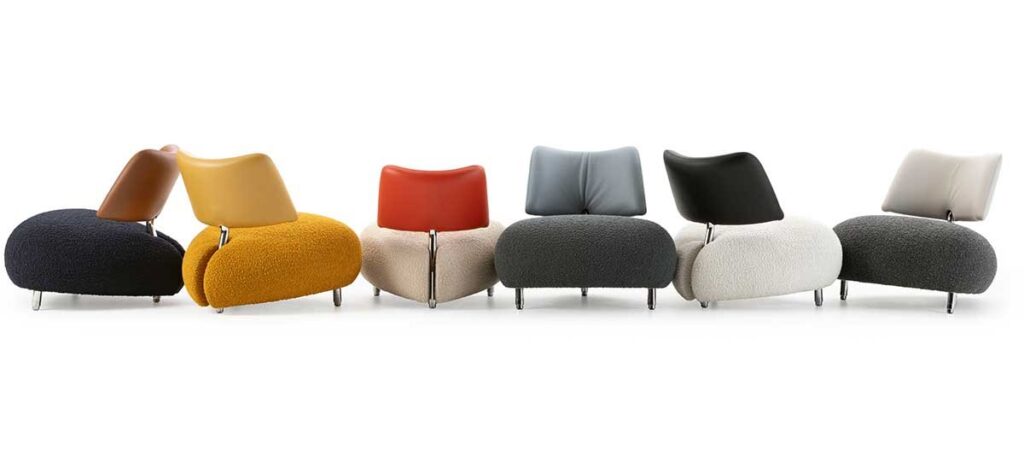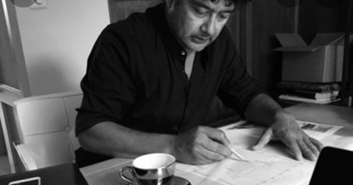“Roy oogt jong en jongensachtig. Toch zit hij al bijna 35 jaar in het vak.
Klanten ‘coachen’ en samen op zoek naar hún persoonlijke stijl, dat is de kern.”
Sketching and designing is in his blood. From an early age, you would not find him without his trusted pencil and sketchbook. He is always drawing, designing and creating. Being a headstrong young man, he decides to go for an entrance exam at the Rietveld Academy in Amsterdam. He is told he is talented but too young.
But his time will come. During his period of service he is given the opportunity to develop as a technical draftsman. After that, nothing can stop him anymore. He chooses the University of the Arts in Utrecht (HKU), where he can enroll in the second year. Even during his training, he caused a stir with a project he did for the legendary fashion duo Puck & Hans. They are known for their hip and slightly eccentric style. Roy designs a successful, completely new interior for their stores in The Hague, among others. This lays the foundation for his career as a designer. He learns courage from Puck & Hans character can lead to great success.

Winkel Puck & Hans, Den Haag (1986)

The Pallone – The Italian word for balloon – futuristic and light on its feet
Shortly after his studies, Roy immediately made his breakthrough as a furniture designer. A prototype of his chair can be admired in the then revolutionary House of the Future (1989) by futurologist Chriet Titulaer. The 'sitting ball' looks futuristic and light-footed. Furniture designer Leolux, the house's main sponsor, saw a future in the design and put it into production that year under the name Pallone, Italian for balloon. It turns out to be a huge success. The chair became the icon of Leolux and won many awards, including 'Best Dutch Furniture Design'. The chair is still being made and more than 100,000 have been sold worldwide.

Roy realizes that he has already achieved the highest possible level in the field of furniture design. He therefore decides to focus on interior design total design is central. That is what he still does – with great pleasure. He designs for projects at home and abroad from his own studio or from his 'finca' in Mallorca.
Because although he enjoys working in the Netherlands, he also feels comfortable abroad. His working area has now extended to locations that appeal to everyone's imagination, such as Mallorca, Locarno, Cape Town, Johannesburg and even Panama City. The projects differ enormously from each other. From beautiful residential projects to the retail designs for all Skins Cosmetic boutiques worldwide. But they have one thing in common: you determine the end goal together with the customer!
What has become increasingly important for Roy over time is being able to work in freedom. Apart from a fixed workplace. In freedom he can now in fact let his ideas arise anywhere. He always seeks to collaborate with a team of experienced but also innovative professionals, including technical draftsmen, project managers, 3D illustrators and interior builders.
Roy 'coaches' his clients, where he searches for their personal style together, which he then translates into contemporary living or working. He wants to take the customer to their end goal, a goal that is not yet known and that they will discover together with him. How he does that is different for everyone.
Roy does not believe that as a designer you have to develop some kind of handwriting. Roy tries to look at that moment from his customer's perspective and then contributes his creative and technical knowledge. He tries to read what the client would actually want. And during renovations, he not only listens to the client but also looks at the building.
‘Designing is like playing table tennis, moving in both directions and climbing to the next level together’
'I would like to give the building back some of its character'


